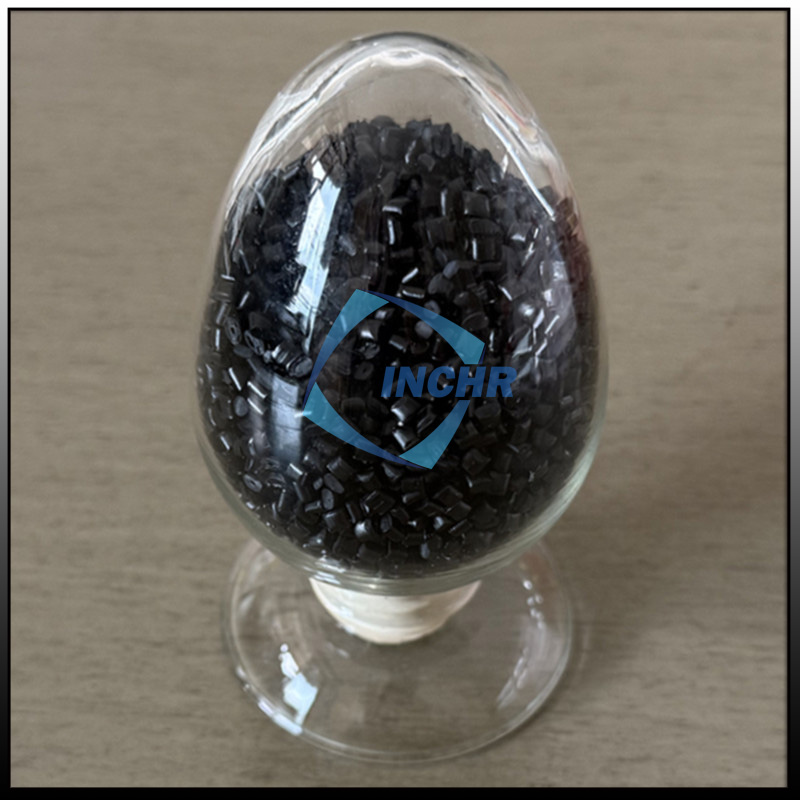Introduction
In an era where performance and sustainability collide, carbon fiber reinforced nylon (CFRN) has emerged as a cornerstone material for cutting-edge consumer and industrial products. By merging nylon’s versatility with carbon fiber’s robustness, CFRN delivers unmatched strength, weight savings, and design freedom. This blog uncovers how CFRN is driving advancements in automotive, sports, and electronics—industries where every gram and newton matter.

What Makes Carbon Fiber Reinforced Nylon Unique?
Carbon fiber reinforced nylon is a composite where carbon fibers (typically 10–30% by weight) are embedded into a nylon matrix (PA6, PA66, or PA12). This synergy creates a material that outperforms traditional plastics and metals:
Strength: Tensile strength rivaling steel at a fraction of the weight.
Flexibility: Retains impact resistance even in sub-zero temperatures.
Manufacturability: Compatible with injection molding, 3D printing, and CNC machining.
Carbon Fiber Reinforced Nylon in Automotive: Lighter, Faster, Greener
The automotive industry’s shift toward electric vehicles (EVs) and fuel efficiency has made CFRN indispensable:
EV Battery Housings
CFRN’s low weight and flame-retardant properties protect battery packs while extending vehicle range. Tesla and BMW now integrate CFRN trays to reduce overall battery weight by 15–20%.Structural Components
Door panels, seat frames, and under-the-hood parts benefit from CFRN’s vibration damping and heat resistance (up to 150°C). For example, Porsche uses CFRN brackets in its Taycan to enhance rigidity without adding bulk.Sustainability Edge
Lightweighting with CFRN cuts CO2 emissions. Toyota estimates that replacing aluminum with CFRN in select components reduces lifecycle emissions by 30%.
Carbon Fiber Reinforced Nylon in Sports & Outdoor Gear: Performance Redefined
From cycling to mountaineering, CFRN is elevating athletic equipment:
Bicycle Frames
Brands like Specialized and Canyon use CFRN to craft frames that are 40% lighter than aluminum, improving acceleration and handling. The material’s fatigue resistance also ensures longevity on rugged terrains.Helmets and Protective Gear
CFRN’s energy-absorbing properties make it ideal for helmets. For instance, Bell’s CFRN-reinforced bike helmets offer superior impact protection while weighing under 300g.Climbing Hardware
Carabiners and ice axes made with CFRN withstand extreme forces without corroding—a game-changer for alpine expeditions.
Carbon Fiber Reinforced Nylon in Consumer Electronics: Slimmer, Stronger, Smarter
Electronics manufacturers prioritize miniaturization and durability, and CFRN delivers:
Laptop and Smartphone Chassis
Companies like Dell and Samsung prototype CFRN laptop shells that are 50% lighter than magnesium alloy, enabling ultra-portable designs. CFRN also shields devices from EMI (electromagnetic interference).Wearable Technology
Smartwatch frames and AR/VR headset housings benefit from CFRN’s balance of comfort and ruggedness. Garmin’s Fenix series uses CFRN bezels to resist scratches and impacts.Drones and Robotics
CFRN propellers and drone arms enhance flight stability and battery life. DJI’s Matrice 300 series leverages CFRN parts for industrial-grade durability.
CFRN vs. Competing Materials
| Material | Density (g/cm³) | Tensile Strength (MPa) | Key Limitation |
|---|---|---|---|
| CFRN | 1.3–1.5 | 150–220 | Higher cost vs. plastics |
| Aluminum | 2.7 | 80–150 | Prone to corrosion |
| Steel | 7.8 | 400–550 | Heavy and difficult to mold |
| Standard Nylon | 1.1–1.2 | 50–90 | Low thermal resistance |
CFRN’s blend of low density and high strength makes it ideal for weight-sensitive applications.
Innovations in CFRN Manufacturing
Advancements in production techniques are expanding CFRN’s possibilities:
3D Printing
Brands like Stratasys and Markforged offer CFRN-compatible printers, enabling rapid prototyping of complex parts like custom orthotics or drone components.Hybrid Molding
Overmolding CFRN with soft-touch silicones creates ergonomic grips for tools or sports equipment.Recycled CFRN
Companies like Solvay now produce CFRN using recycled carbon fiber, reducing waste in aerospace and automotive sectors.
The Future of CFRN: What’s Next?
AI-Optimized Composites
Machine learning algorithms predict optimal fiber layouts for bespoke stress requirements, slashing R&D time.Bio-Based Nylon Matrices
Sustainable nylons derived from castor beans (e.g., Arkema’s Rilsan®) paired with recycled fibers will drive eco-friendly CFRN.Smart CFRN
Embedded sensors could enable self-monitoring parts—imagine a bike frame alerting users to micro-cracks via Bluetooth.
Conclusion
Carbon fiber reinforced nylon isn’t just a material—it’s a catalyst for innovation across industries. By enabling lighter, stronger, and more sustainable products, CFRN empowers engineers and designers to push boundaries. As manufacturing tech evolves, expect CFRN to unlock even bolder breakthroughs, from AI-designed components to self-healing structures.




